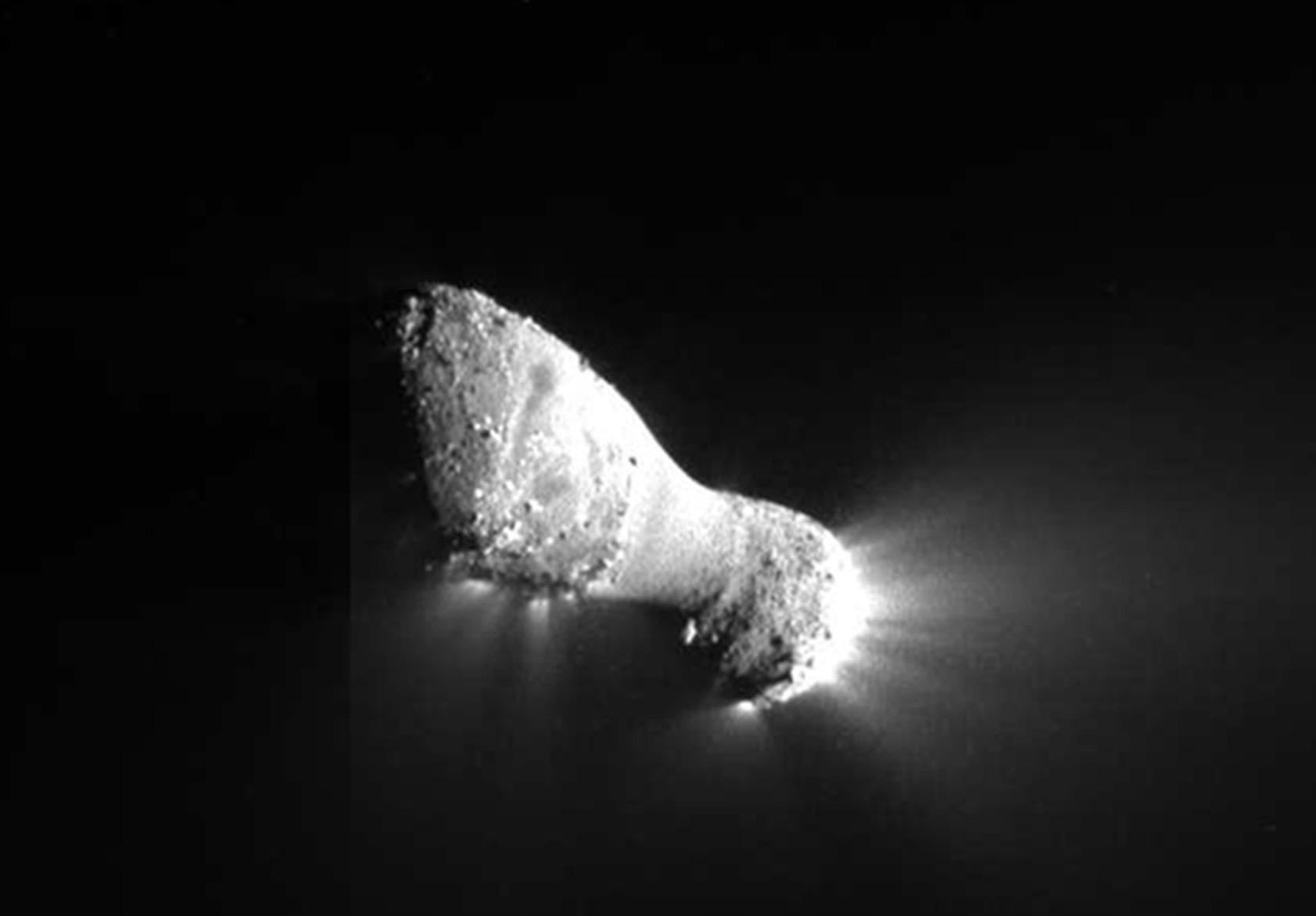Near-Earth Objects (NEOs) are rocky bodies orbiting our Solar System that pass relatively close to Earth's orbit. Scientists have identified over 30,000 NEOs ranging from small boulders to massive rocks spanning several kilometres in diameter. These celestial bodies are of particular interest to astronomers not only for their scientific value in understanding the formation of our Solar System but also because they pose potential impact hazards to our planet. Space agencies like NASA continuously monitor these objects through programs such as the Near-Earth Object Surveillance Mission, calculating their trajectories to provide early warnings of possible collisions.
 Near Earth Object Comet Hartley-2 captured by NASA's EPOXI mission (Credit : NASA/JPL-Caltech/UMD)
Near Earth Object Comet Hartley-2 captured by NASA's EPOXI mission (Credit : NASA/JPL-Caltech/UMD)
Despite significant advances in asteroid detection technology in recent decades, important gaps remain. Ground-based survey programs like the Catalina Sky Survey and Pan-STARRS have collectively discovered over 90% of near-Earth asteroids larger than 1 kilometre, significantly reducing the risk from globally devastating impacts. However, detection rates drop dramatically for smaller objects, with less than 40% of potentially hazardous asteroids in the 140-meter range currently cataloged. Detection challenges include limitations of ground-based telescopes (affected by weather, daylight, and atmospheric interference), blind spots near the sun, and the inherently dark, low-albedo nature of many asteroids.
 A Catalina Sky Survey Observatory at dusk at Mount Lemmon Observatory in the Santa Catalina Mountains near Tucson, Arizona (Credit : Daniel Oberhaus)
A Catalina Sky Survey Observatory at dusk at Mount Lemmon Observatory in the Santa Catalina Mountains near Tucson, Arizona (Credit : Daniel Oberhaus)
International and U.S. defence protocols have identified the urgent need for rapid-response spacecraft reconnaissance capabilities, particularly for asteroids around 50 meters in diameter—objects large enough to cause significant regional damage yet small enough to evade detection until they're dangerously close. Even after the completion of advanced survey initiatives like NEO Surveyor and the Rubin Observatory, approximately half of these 50-meter objects will remain undiscovered until they're nearly upon us. This sobering reality means that for many potential impact scenarios, a quickly deployed flyby mission may represent our only chance to gather critical data before impact.
 The Rubin Observatory against the Milky Way (Credit : Rubin Observatory/NSF/AURA/B)
The Rubin Observatory against the Milky Way (Credit : Rubin Observatory/NSF/AURA/B)
In a recent paper authored by Nancy L. Chabot and team from Johns Hopkins University, they assert that a planetary defence flyby reconnaissance mission must demonstrate capabilities to quickly reach a small ~50-meter NEO, determine its Earth impact probability, and gather essential physical data to inform decision makers. This presents significant technical challenges, including managing flyby speeds up to 25 km/s and high solar phase angles while collecting crucial data from such a small target.
The core principle of planetary defence is that we don't choose which asteroids threaten us—we must be prepared to respond to whatever object presents a danger. Therefore, the team argues that the mission's true purpose isn't simply demonstrating asteroid flyby technology, but developing robust capabilities specifically tailored for the small, short-warning-time objects most likely to require rapid space-based studies, an essential advancement in our planetary defence readiness.
Source :A Mission to Demonstrate Rapid-Response Flyby Reconnaissance for Planetary Defense
 Universe Today
Universe Today
